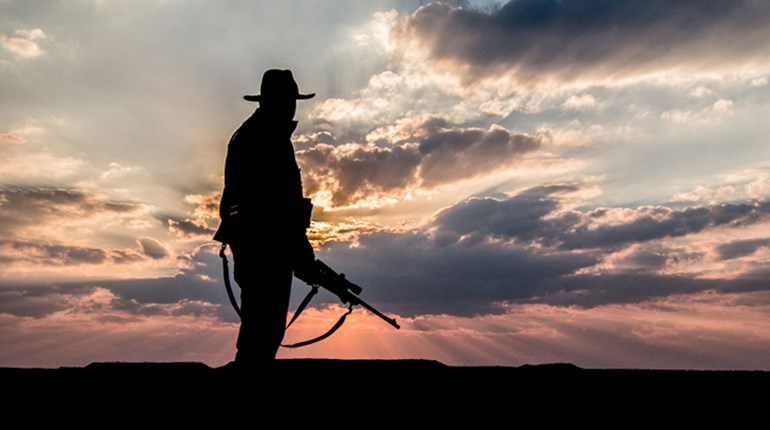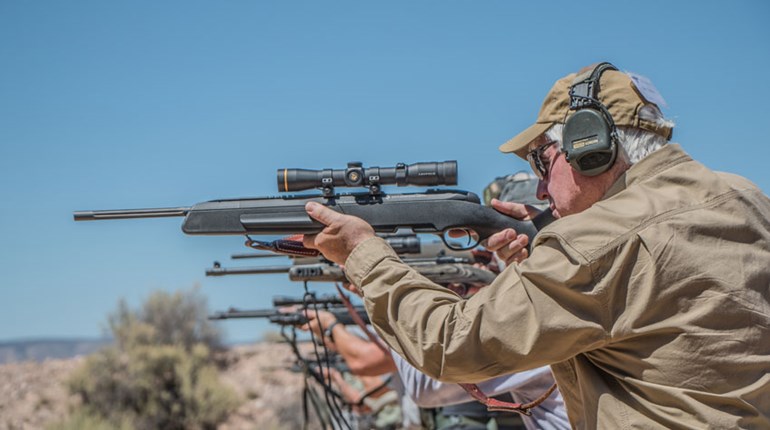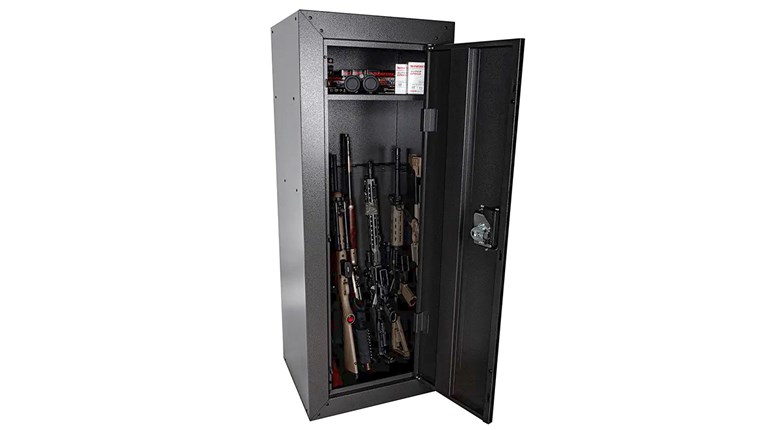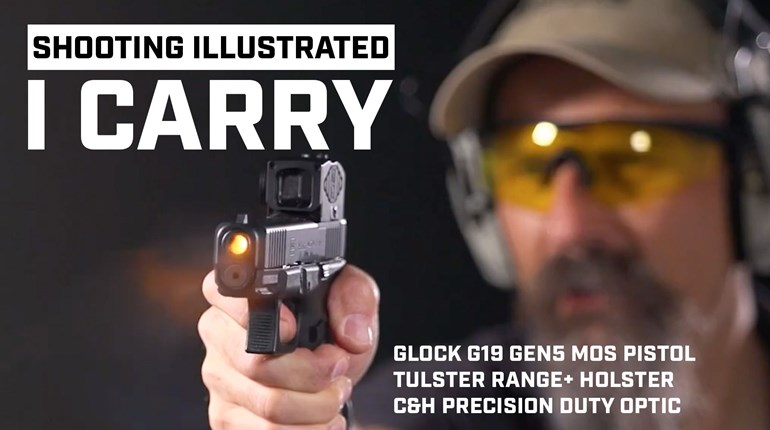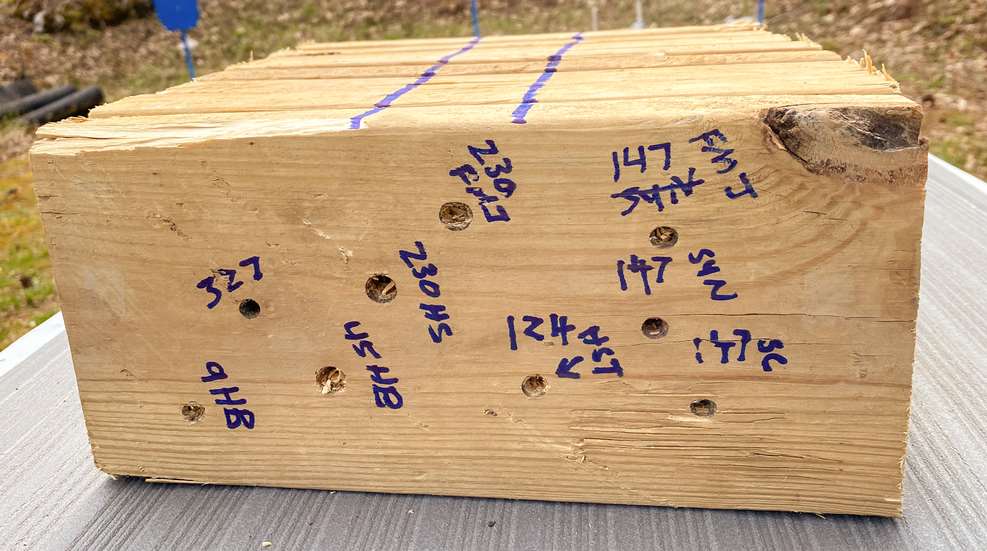
All handgun loads were fired into an arranged stack of 2x6-inch, treated pine boards
Penetration is a critical aspect of terminal performance. As the great African professional hunter and gunwriter Finn Aagaard once wrote, “Killing power is a matter of biology, not math and physics, and is influenced almost totally by shot placement, accompanied by sufficient penetration.” The Federal Bureau of Investigation (FBI) is of a similar mind; it has set 12 inches of penetration as the sufficient depth when ammunition is tested in 10-percent ordnance gelatin. The Bureau also exposes bullets to a variety of intermediate barriers like auto glass, steel, plywood and wallboard.
Ten-percent ordnance gelatin and similar media are great for testing terminal performance. They provide an indication of penetration potential and allow estimations of expansion and soft-tissue damage. However, soft-test media are not practical for the deepest-penetrating loads, because it’s nearly impossible to arrange enough testing blocks in a line long enough to stop the bullets. Also, bullets that can penetrate more than 3 feet in 10-percent ordnance gelatin often veer off course just enough to exit the side of a 6-inch-wide block of testing goo before penetration is complete.
I recently received some new 147-grain 9 mm ammunition from Federal out of its Solid Core line. This ammunition utilizes an extremely hard, high-antimony lead bullet, commonly known as a hardcast bullet. However, Federal Solid Core loads are a bit different because the bullets are coated with the Syntech polymer-jacket material to reduce friction and leading. With traditional hardcast loads, this is most often accomplished with wax rings and gas checks. Federal Solid Core ammunition is intended for defense against predators and big-game hunting, and in addition to the extant 9 mm, .40 S&W, 10 mm and .45 ACP loads should soon be available.
I wanted to see how deep this 147-grain 9 mm load would penetrate compared to more common loads. But, I did not want to try to line up five or six blocks of gelatin in an attempt to stop the bullet. My answer was, as my grandfather would have said, “hillbilly simple.” I stacked one-foot sections of a treated 2x6-inch pine board and clamped them together. Then, from 10 feet, I fired the new Federal Solid Core 9 mm load and eight other loads into the blocks of wood. I’m not suggesting this was a highly scientific experiment, but more of an interesting demonstration of concept.
The first bullet recovered was the 135-grain .45 ACP Honey Badger load; it only partially penetrated the third board. Both 230-grain .45 ACP bullets—the FMJ and Hydra-Shok—entered the third board, but did not exit. The 100-grain 9 mm Honey Badger did the same. The 9 mm 124-grain Federal HST, 147-grain FMJ and 147-grain Syntech bullets all went into the fourth board, but did not exit. The final two bullets, a 130-grain hardcast load for the .327 Fed. Mag. from Buffalo Bore and the 147-grain Federal 9 mm Solid Care load, made it into the fifth board.
You may be wondering why the two reputable self-defense bullets, the Hydra-Shok and HST, failed to expand. After all, both do well on the FBI’s plywood barrier test; they penetrate the plywood and then expand when impacting the 10-percent ordnance gelatin block. Well, for starters, this is specifically what these bullets were engineered to do. With the plywood-barrier test, the bullet must only push through one piece of .75-inch plywood. The bullet is not exposed to enough compressible wood to fill the nose cavity and prevent the essentially incompressible gelatin, which is 90-percent water, from flowering these bullets out in their common recovered form. In the pine boards the hollow points of these bullets were packed with wood—wood that is much softer than the bullets and that was tightly compressed into the hollow point. Without the introduction of an incompressible liquid into the hollow-point cavity, expansion was circumvented.

Though bullet shape plays a small role, much like a more aerodynamic bullet slips through the air easier, in my experiment penetration was primarily a product of velocity and sectional density (SD). The bullets with the best combination of velocity and SD penetrated the deepest. But, when expanding bullets like the HST and Hydra-Shok are fired into soft tissues like in the FBI tests, sectional density of the unfired bullet cannot be relied upon as an indicator of penetration potential. This is because the bullet’s weight in relation to its diameter—its sectional density—changes immediately after impact.
For example, an unfired 124-grain 9 mm HST bullet has a SD of .140, but after penetrating an inch in 10-percent ordnance gelatin or soft tissue and expanding to about .6 inch in diameter, it’s SD is closer to .055. That’s why in soft tissue, the HST load will only penetrate about 14 inches or so, but an FMJ load with the same SD will push as much as three times deeper.
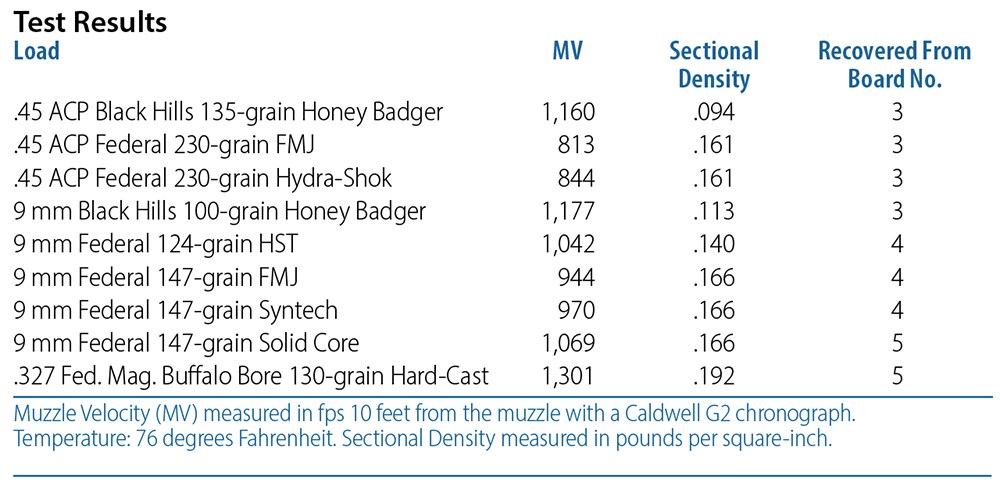
Now, unless you find yourself in a gunfight in a lumber yard or have a shootout while building a deck on the backside of your abode, it’s doubtful much of this has any practical relation to using a handgun for self-defense against a human attacker. On the other hand, if you’re worried you might have to shoot through tough or thick barriers, or stop a charging grizzly, take note. Some bullets can do that, and some cannot.
Regardless, it’s clear Federal’s new Solid Core 9 mm load is an extremely deep-penetrating option for the 9 mm. It will out-penetrate common FMJ and expanding 9 mm and .45 ACP loads. It should also effortlessly shoot through any bad guy no matter how fat, as well as delivering sufficient penetration on a threatening cougar, bear or even a saber-toothed tiger. Of course, don’t forget the other half of Aagaard’s “killing power” advice: All the penetration in the world won’t make up for bad shooting.













